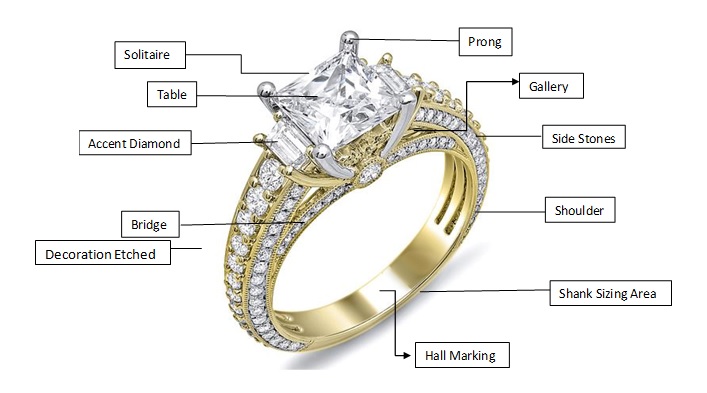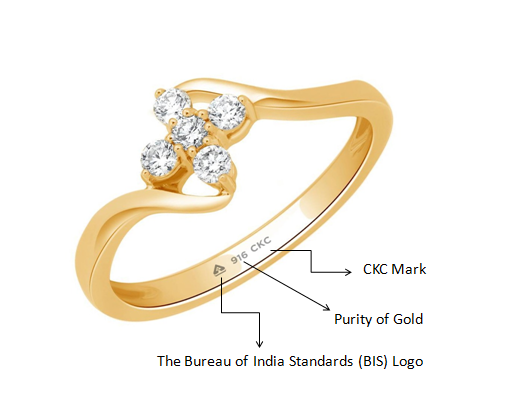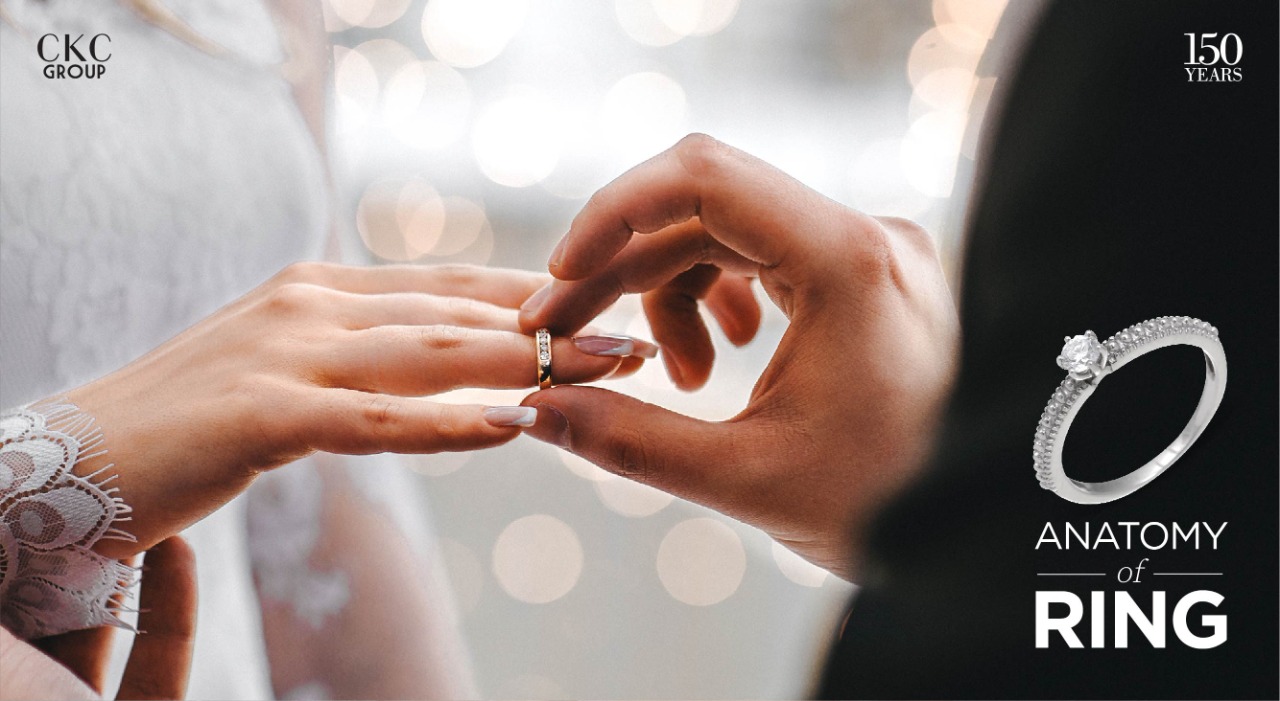Anatomy of Ring
As you look down at your fingers, you might be wearing your favourite ring. Perhaps gifted to you on your graduation by your mother or as a wedding present by your special someone, it may mean the world to you. Yet, are you aware of what your favourite stands for? Let’s delve into the particularities of the sparkle of our lives – and learn a little about rings.
A jewellery purchase is a mighty feat and commonly leaves a dent in your pocket. Thus, it is only fair that you make this investment sensibly and knowledgably. How do you do this? Know the anatomy of rings inside out – to find your best fit.
First off, let’s start with the basics.
The Anatomy of a Ring

A profile view of a ring is illustrated for better understanding.
Solitaire: Ring with a single, solitary stone.
Side Stone: Gemstones that complement and place emphasis on the center gemstone. Side gemstones are typically larger than accent gemstones.
Accent diamonds: Diamonds that surround or enhance the main diamond. Typically, smaller in size than the main diamond.They complement the center and sidegemstones.
Bridge: The structural portion of a mounting that connects one side of the shank to the other.
Center Gemstone: The main gemstone in the design – usually the focal point of the jewelry.
Setting Style: A setting is the way in which a gem is held. Prong, bezel, and channel are all types of settings.
Prong:These are pieces of metal used to secure diamonds and gemstones.Known by jewellers as a “head”, for a layman they would represent a claw-shaped binding(typically 3,4 or 6 prongs per head) rising from the base of the jewellery to enable gemstone mounting.
Ring Guard:This is exactly what you would presume it to be – a guard for the center stone. Consisting of two shanks, the guard allows easy insertion and protection of the solitaire.
Shank: The shank is the part of a ring that encircles the finger; usually a plain band.
Shank Sizing Area: The area at the bottom of a ring shank where metal can be inserted or removed to reduce or increase the finger size of the ring. This means if you buy a ring as gift for someone, and oh no! – it doesn’t fit, do not worry. The ring size can easily be adjusted courtesy of the shank sizing area.
Table:This is the top, flat part of the cut of a gemstone.
Shoulder: The part of a ring connecting the band encircling the finger to the setting at the top. Often decorated or embedded with stones to complement the main part of the ring.
Decoration-Etched: This is a very faintly carved surface decoration, that can also be crafted using acids or lasers.
Hall Marking: This is a stamp applied to items of jewellery and silverware bythe Assay Offices as a guarantee of authenticity. The stamp consists of four components:

- The BIS logo mark
- 916 Mark for Purity of Gold
- Jeweller’s Ientification Mark (CKC Letters Mark)
- The Assay Office Mark
- Year of Hallmarking
Semi Mount: A semi‐mounting is a ring that has everything except for the center stone. A semi‐mounting allows customers to add the stone of their choice to complete the ring. So whether your dress is a pastel lavender or a bright red, choose a semi-mounted ring and add the gemstone of your choice for a ring that complements your attire.
As you wander to do a jewellery shop in search of the ring of your dreams, be aware of the style and specifications you desire. While it is true that beauty lies in the eyes of the beholder, all that is shining isn’t gold.
When looking for a ring you wish to last a lifetime, look from the eyes of a craftsman. Consider the format of the ring: the design, the band width, the symmetry and polish. Look for the wow! factor in the creativity of design and keep an eye out for gorgeous gemstones. Pay close attention to the purity of the metals and hardness of the gemstone. Feel it in your hands and imagine yourself wearing it.
Does the ring speak to you? Is it representative of YOU? If it is the ring of your dreams, it is time to get out your wallet and make the purchase, for this investment is certainly worth it!
Curated by – Viswanath Mohan





